We have a strict honesty policy, but please note that when you buy through our links, we may earn a commission. Learn more.
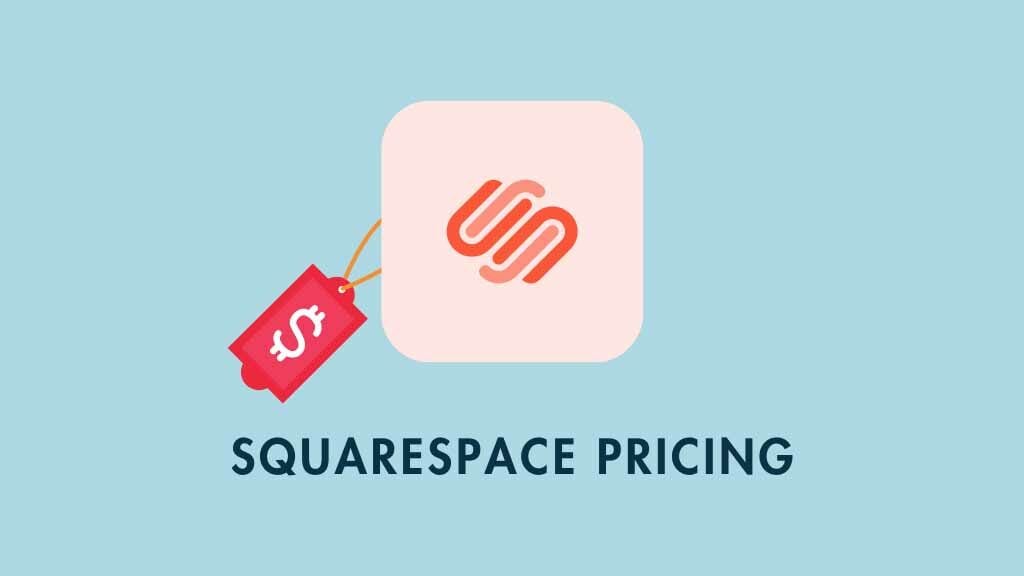
In this guide to Squarespace pricing, I take a look at how its fees structure works and discuss the pros and cons of each plan. Which one is best for you?
I’ll start with a quick summary of which plan is best for which user, and then move on to a deeper dive.
| Squarespace Plan | Pricing | Best for |
| Basic | $25/mo | Bloggers, artists, musicians. Basic plan trial >> |
| Core | $36/mo | Content producers who sell products occasionally. Core plan trial >> |
| Plus | $56/mo | Merchants with reasonably sophisticated ecommerce demands and those offering online courses. Plus plan trial >> |
| Advanced | $139/mo | Professional merchants and those selling a lot of gated video-based content. Advanced plan trial >> |
Squarespace pricing — the available plans
There are four Squarespace pricing plans available: ‘Basic,’ ‘Core,’ ‘Plus’ and ‘Advanced Commerce.’ If you pay on a monthly basis for these plans, the USD costs for each are as follows:
- Basic — $25 per month
- Core — $36 per month
- Plus — $56 per month
- Advanced — $139 per month
(Note: if you’re not based in the US, these plans will vary slightly in price depending on your local currency, but the names and features of each remain consistent.)
Paying on an annual basis brings a sharp reduction in fees:
- Basic — $16 per month
- Core — $23 per month
- Plus — $39 per month
- Advanced — $99 per month
This means that — depending on your chosen plan, you can save between 28% to 36% by paying annually.
Accordingly, if you have the budget, it usually makes sense to go for the annual pricing option (but watch out for Squarespace’s refund policy on it — you can only avail of a full refund when you cancel an annual website subscription within 14 days of commencing it.)
➡️ There is also a free Squarespace trial available, which helps you get a sense of which of the above pricing plans will work best for you. You can access this here.
In addition to the basic plans, there are some paid-for extensions / add-ons available, which I’ll come to later in this post — but right now, let’s dig into the features of each of the Squarespace plans.
The Squarespace ‘Basic’ plan
At $16 or $25 per month (depending on whether you go for annual or monthly pricing respectively), the ‘Basic’ plan is Squarespace’s cheapest offering.
It includes the following core features:
- Free custom domain (yoursitename.com etc.)*
- Unlimited bandwidth.
- Unlimited storage.
- Access to around 185 web design templates.
- The option to sell an unlimited number of products.
- The option to sell courses, memberships and video content.
- Checkout on your domain — this allows transactions to be completed directly on your own domain, like yoursitename.com, instead of a Squarespace URL.
- Customer accounts — these let your users create accounts that they can sign into for faster checkout (and increased conversions).
- Galleries.
- Blogging features
- 30 minutes of video hosting.
- Gift card functionality.
- An abandoned cart saving tool.
- Product reviews — this feature lets you automatically send an email to your customers 14 days after you fulfil their order.
- Point-of-sale (POS) features — these let you sell products in physical location via Squarespace and a card reader (note: POS is currently restricted to US users).
- Basic web stats.
- 2 contributors.
- Squarespace support via email and live chat.
- Ability to install ‘extensions’ (apps that add functionality to your Squarespace site).
- SSL security features.
* Annual plans only.
The key omissions from this plan
With the ‘Basic’ plan, the omissions are arguably more important than the features — there are three key things that you can’t do with it.
First, you can’t make use of several key integrations — you won’t be able to hook your Squarespace site up to key services like ChowNow, OpenTable or Zapier, and you won’t be able to add a Facebook pixel (used for tracking the effectiveness of Facebook adverts) to your site.
And second, you won’t have the option to add CSS or JavaScript to your site; this means that if you want to go beyond the standard Squarespace visuals or functionality, you won’t be able to do so (as CSS code and Javascript are necessary, respectively, to create bespoke tweaks to your theme or add your own features).
And third, you miss out on 0% transaction fees. On the ‘Basic’ plan, Squarespace charges you 2% every time someone purchases a physical product from your site.
If you are only selling products every now and again, this isn’t really something to worry about too much. However, if you end up selling a lot of products with Squarespace, these payment processing fees can end up amounting to a significant (and unnecessary) cost.
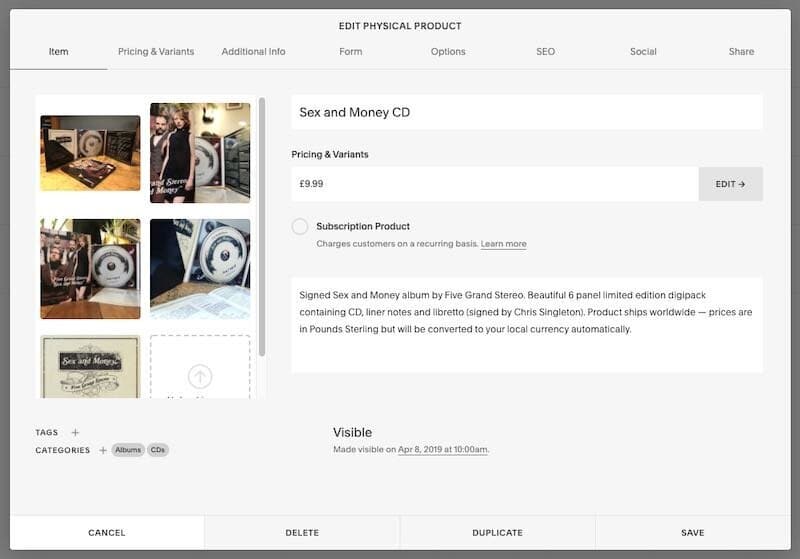
Additionally, the transaction fee for selling digital content or memberships on the ‘Basic’ plan is a fairly hefty 7%.
The transaction fees mentioned above are in addition to any fees you may pay for credit card processing on your store. If using Squarespace’s in-house payment processor — ‘Squarespace Payments’ — you’ll face a payment processing fee of 2.9% + 30¢ on the ‘Basic’ plan.
Is the Squarespace ‘Basic’ plan for me?
With the ‘Basic’ plan, the clue is in the name — it’s not as sophisticated as the other plans for business or ecommerce applications. Rather, it’s geared towards individuals who want a very simple website with a minimum of cost or fuss.
For creating something like a wedding website or a site to promote a birthday party, it’s great. It’s also a reasonably good option for those who want to occasionally blog or sell a few products from time to time.
If that sounds like you, you can try the Basic plan for free here.
Now there is one particular business application where the ‘Basic’ plan can be of great use — portfolio sites.
If you’re a photographer or artist needing a platform to showcase your work, the ‘Basic’ plan gives you lots of ways to present your content in attractive ways.

You might also get away with using the ‘Basic’ plan for a simple music website, so long as you don’t mind paying the 2% transaction fee on every sale.
In truth, to sell products at scale, or monetize your site in other ways, the ‘Basic’ plan isn’t really an option — you’ll need to go for one of the other Squarespace plans, all of which give you access to more business and ecommerce features.
Let’s look at the first one of these now.
The Squarespace ‘Core’ plan
The ‘Core’ plan is the cheapest Squarespace plan that lets you sell physical products online without incurring any transaction fees.
In addition to the features provided with the ‘Basic’ plan, you get the following key additions:
- The option to accept donations.
- The option to work with an unlimited number of site contributors (authors, editors etc.).
- Complete access to Squarespace’s premium integrations and blocks (ChowNow, Opentable, Zapier etc.).
- The ability to customize your site with CSS and Javascript.
- 5 hours of video storage.
- Real-time carrier shipping quotes — this feature allows you to link your Squarespace site to postal companies (USPS, FedEx and UPS) and display accurate, real-time shipping charges from them at checkout.
- Google Shopping listings
- Limited availability labels — these let your site visitors know that a product is low in stock (doing so can create a sense of urgency / scarcity, and lead to increased conversions).
- More marketing features, including the option to add promotional pop ups and banners.
- More merchandising tools — these let show your store visitors images of related products, or let them join a product waitlist.
- The option to integrate your site with Mailchimp and Zapier.
- Advanced website analytics for ecommerce — unlike the ‘Basic’ plan, the ‘Core’ one provides you with the full suite of ecommerce analytics, rather than just basic sales statistics.
- A free Google Workspace account for one year (1 user only).
This plan costs $36 or $23 per month, depending on whether you pay on a monthly or annual basis respectively.
Transaction fees on the ‘Core’ plan
A key drawback of the ‘Core’ plan boils involves transaction fees on certain types of products.
While Squarespace doesn’t charge any transaction fees on the sale of physical products on the ‘Core’ plan, the transaction fees involved with selling digital content are significant — 5%.
Additionally, payment processing fees for ‘Squarespace Payments’ are the same as the ‘Basic’ plan at 2.9% + 30¢ of every sale.
Is the ‘Squarespace Core’ plan right for me?
The Squarespace ‘Core’ plan is best suited for website owners who want
- the flexibility to connect their site to a range of third-party tools
- to be able to customize their site using CSS or Javascript
- to work with a lot of different authors and editors
- to sell products through Google Shopping.
In a nutshell, this Squarespace pricing plan is a good option for users who are in the early stages of starting a business. It’s a flexible, feature-rich plan that also facilitates quite comprehensive online selling.
However, by comparison to the Squarespace ‘Plus’ and ‘Advanced’ plans, the ‘Core’ plan’s selling features are slightly under-specced, especially where hosting large amounts of digital video content and integrating with external ecommerce tools concerned.
Let’s take a look at the first of these now.
The Squarespace ‘Plus’ plan
The first thing worth noting about the ‘Plus’ plan is that it applies significantly lower transaction fees than the ‘Basic’ and ‘Core’ plans.
On the ‘Plus’ plan, transaction and processing fees are as follows:
- Credit card processing fees with ‘Squarespace Payments’ — 2.7% + 30¢.
- Transaction fees on digital content and membership products — 1%.
Additionally, the amount of video storage you get on this plan is much more generous than the previous plans discussed.
While the ‘Basic’ plan limits you to 30 minutes of stored video, rising to 5 hours on the ‘Core’ plan, the ‘Plus’ plan lets you store up to 50 hours of video content on your site — making it a much more viable option for selling online courses and other video-based products.
The ‘Plus’ plan is also a great option for scaling up your ecommerce activities via Squarespace’s API. This lets you code your own custom ecommerce integrations with Squarespace, allowing you to create bespoke processes and automations for fulfilment, inventory management etc.
By leveraging the API, you can automate workflows, sync data across multiple tools and create a more efficient and scalable ecommerce operation tailored to your specific business needs.
Is the Squarespace ‘Plus’ plan for me?
The Squarespace ‘Plus’ plan is a very well-specced plan that gives merchants a powerful range of selling functionality.
If selling video content is your thing, it’s a much better choice than the ‘Basic’ or ‘Core’ plan, thanks to its generous video storage allowance and much lower transaction fees on digital products.
And the fact that it gives you access to Squarespace’s API makes this plan a good choice for website owners hoping to connect a Squarespace store to their own tools and integrations.
Now, let’s look at the ‘Advanced’ plan.
🙂 Time limited offer: a way to save money on Squarespace
If you’re interested in using Squarespace, the company is currently offering 10% off its plans. This can amount to quite a significant saving, especially if you opt for one of its ‘commerce’ plans.
This exclusive discount is available for a limited time only — to avail of it,
- Start a free Squarespace trial using this special link.
- Enter the code STYLEFACTORY10 when purchasing a plan.
The Squarespace ‘Advanced’ plan
At $139 per month ($99 per month if paid annually), the key benefits of the ‘Advanced’ plan over the others boil down to lower transaction fees and the ability to sell an unlimited quantity of video content.
Credit card processing fees on this plan are reduced to 2.5% + 30¢ per transaction. And for selling digital video content and memberships, the ‘Advanced’ plan is the only Squarespace plan that applies a 0% transaction fee to these types of products.
This plan also permits you to upload an unlimited amount of video content to your Squarespace site, which will make it the most attractive Squarespace plan for creators who don’t want to be constrained by the limits that apply to all the other ones.
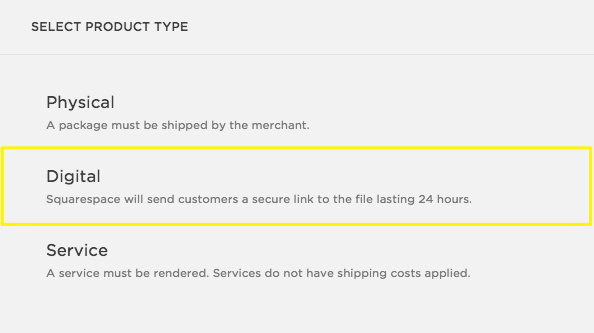
In terms of how this plan stacks up against those from competing solutions, whilst it’s not as fully-specced as the higher-tier plans from the likes of BigCommerce and Shopify, it comes in considerably cheaper than both, while still offering a good range of selling features.
(It should be noted that these platforms do offer other features which are not available in Squarespace at all however, notably in the area of multi-currency or multilingual selling — see our ‘Alternatives’ section below for more details).
Is the ‘Advanced Commerce’ plan right for me?
In truth, the ‘Advanced Commerce’ plan isn’t radically different from the ‘Plus’ plan — the only real differences involve transaction fees and video storage allowances. But if you’re a high volume seller, or sell a lot of video-based content, they’ll matter.
Its reduced credit card fees (2.5% + $0.30 per transaction) can make a difference for high-volume sellers, saving you money as your sales grow.
The plan also allows you to upload and sell unlimited video content without relying on external hosting, which is perfect for course creators or video marketers looking for a seamless setup.
Most importantly, the 0% transaction fees on courses, memberships, and digital products lets you keep all your revenue, making it the best option for businesses focused on digital income streams.
➡️ You can test the ‘Advanced’ plan for free here.
The ‘Squarespace Enterprise’ plan
In addition to the standard Squarespace plans, there is another plan to consider: Squarespace Enterprise.
This plan basically provides you with more hand-holding — you’ll get a dedicated account manager, SEO consultations and design advice.
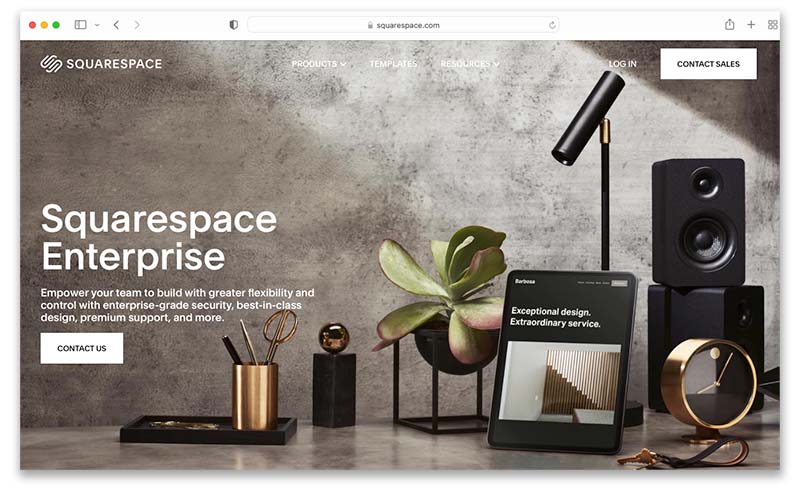
Pricing for this plan is negotiable — you’ll have to contact Squarespace to discuss your needs and they’ll provide a quotation.
Whether Squarespace truly amounts to a solution for enterprises is debatable — in my experience the main thing that enterprises need is very bespoke functionality and advanced SEO optimizations; two things which I’m not sure Squarespace is yet equipped to provide.
For me, Squarespace shines more as a tool for small businesses and solopreneurs who need an elegant, simple tool for building a website — but if you are interested in accessing more support, or using Squarespace in more advanced ways, you can learn more about ‘Squarespace Enterprise’ here.
Squarespace add-ons / integrations
If the core features included in your chosen Squarespace plan aren’t quite enough, you can add to them in a few different ways.
Squarespace extensions and plugins
Squarespace extensions are the equivalent of WordPress plugins or Shopify apps — they are typically developed by third parties and give you additional functionality for a monthly fee.
At the moment however, the number of official extensions available is very small — there are just 45 available.
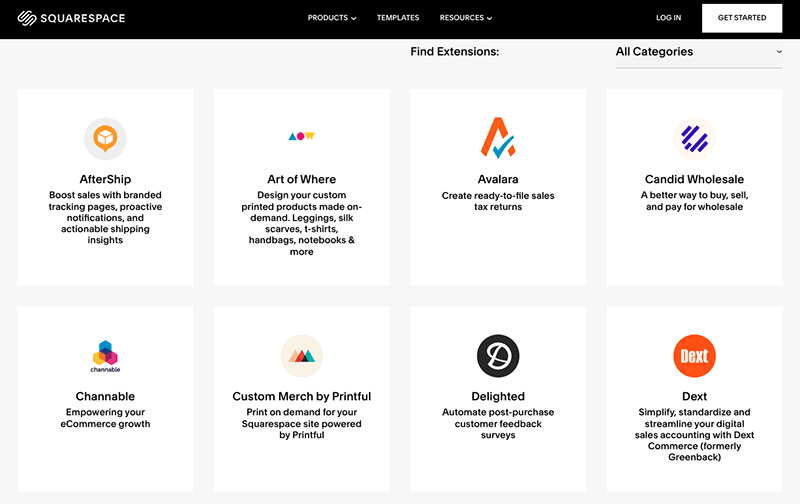
Many of them focussing on inventory management and accounting, but recently a few dropshipping apps have been added to the selection too.
Another way to beef up your Squarespace site’s functionality is to make use of third-party ‘code snippets’. These are increasingly referred to as ‘Squarespace plugins’ and let you do everything from format galleries in particular ways to adding ecommerce features.

Squarespace plugins are not ‘official’ add-ons — they can be developed by a wide range of third-parties — so it’s important to do some due diligence before adding them to your site.
But they can be extremely good for adding interesting features to Squarespace sites.
Squarespace Email Campaigns
Squarespace isn’t just a website builder — these days, it’s technically an email marketing tool too. For an extra monthly fee, you can host a mailing list on Squarespace and send e-newsletters to it.
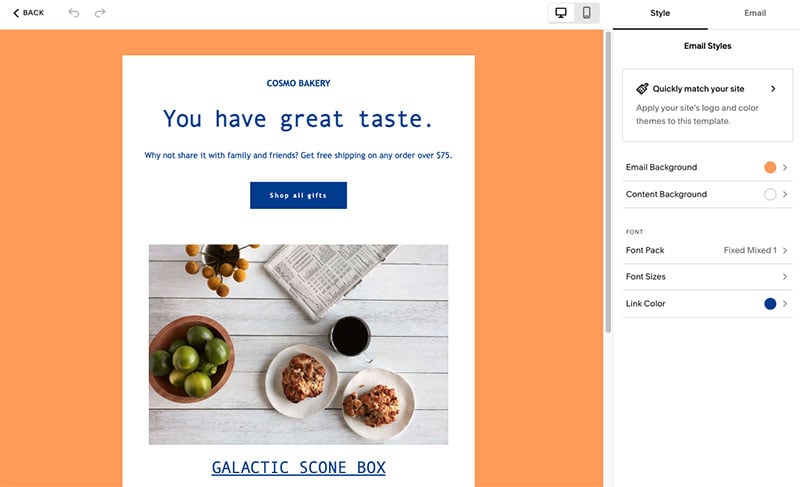
The number of email addresses you can host on your list is uncapped, but the following monthly fees apply to the number of emails you can send to it:
- Starter — $7 to send 3 newsletters to up to 500 recipients per month
- Core — $14 to send 5 newsletters to 5,000 recipients
- Pro — $34 to send 20 campaigns to up to 50,000 recipients
- Max — $68 to send an unlimited number of newsletters to 250,000 recipients
As with the standard Squarespace fees, you can reduce your costs significantly by paying for Squarespace Email Campaigns on an annual basis (if you do so, the above fees become $5, $10, $24 and $48 per month respectively).
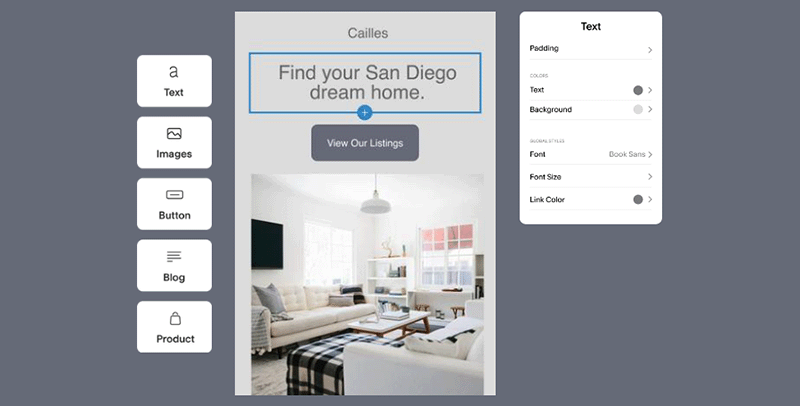
While you’re here, download our free ecommerce e-kit
For a limited time, we’re offering our readers some excellent free tools. Sign up free to immediately receive:
- our online store comparison chart
- a downloadable cheatsheet on how to create an online store
- our SEO, blogging and ‘how to start a business’ cheatsheets
- extended free trials and discount codes for essential business apps
- our latest tips on ecommerce and growing a business
Squarespace membership sites
A useful ‘add-on’ to consider for content creators is the Squarespace ‘Membership Sites’ feature. This lets you charge users for access to a private area of your website, allowing you to sell courses, exclusive content and more to your audience. It also lets you host more video content on your site.
The fees for this are as follows:
- Starter — $12 per month, 1 member area, 7% transaction fees
- Core — $37 per month, 3 member areas, 3% transaction fees
- Pro — $111 per month, 10 member areas, 0% transaction fees
Again, sizeable discounts are available if you pay upfront for a year for this service (when you pay annually, the costs for the above plans work out at $9, $29 and $89 per month).
A key difference to be aware of regarding membership site pricing is the amount of additional video storage you get with each plan. The quotas for the Starter and Core plans are 10 hours and 50 hours respectively, while the Pro plan gives you an unlimited amount of video storage.
As a lot of members’ area users will be subscribing to the feature to sell video-heavy online courses, it’s important to pay attention to these limits.
You can learn more about the Membership Sites feature here.
Squarespace Scheduling
With the ‘Squarespace Scheduling’ add-on, clients can view your availability and book their own appointments or classes. They can pay online for these, and reschedule them.
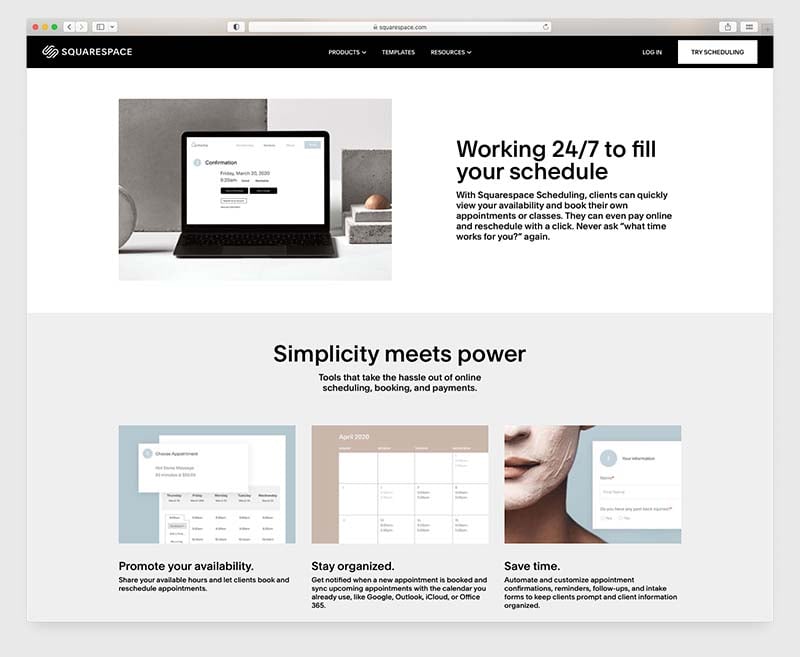
This extra functionality involves an additional fee however, with the Squarespace Scheduling pricing plans being as follows:
- Emerging — $20 per month (access to 1 calendar)
- Growing — $34 per month (access to 2-6 calendars)
- Powerhouse — $61 per month (access to 7-36 calendars)
As with the other Squarespace pricing options, these fees are reduced if you pay upfront for a year (to $16, $27 and $49 per month respectively).
In terms of the key differences between these plans, all of them let you, your team and your clients access an appointment calendar; the ‘Growing’ plan adds SMS reminders, gift cards and subscriptions; and the ‘Powerhouse’ plan allows you to work across multiple time zones and access the Scheduling API.
(There are a few other differences which you can check out here.)
Tock
Tock is an event management and ticketing system that lets website owners take reservations — making it a particularly good fit for restaurant owners, many of whom use Squarespace.
Recently acquired by Squarespace for $400m, it can now be tightly integrated with the platform.
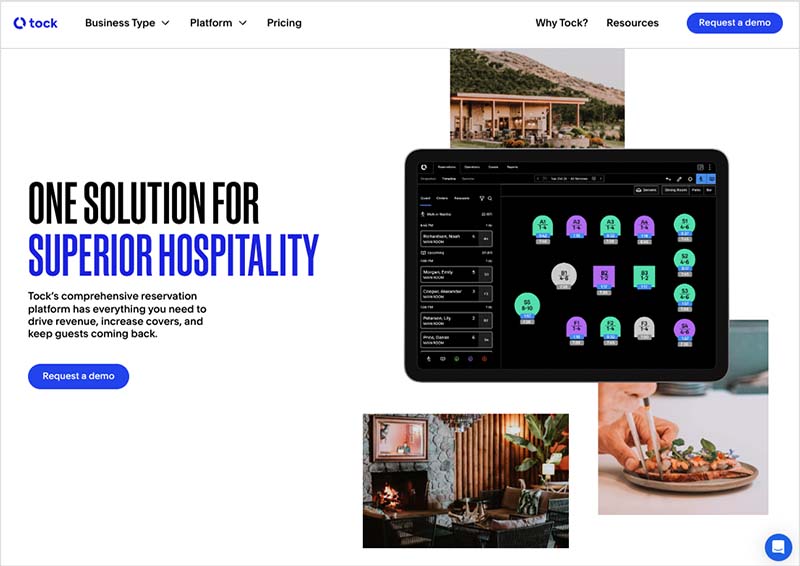
If you want to use Tock to take bookings for restaurants, monthly fees apply.
There are 4 annual Tock plans available. These are:
- Base — $99 per month / 3% fee on prepaid reservations
- Essential — $269 per month / 3% fee on prepaid reservations
- Premium — $399 per month / 2% fee on prepaid reservations
- Premium Unlimited — $899 per month / No fees on prepaid reservations
If you take out a two-year or three-year Tock plan, you can avail of 8% to 25% discounts on these pricing options, depending on your chosen plan.
If you want to use Tock to handle takeout and delivery services, it’s a case of paying a 3% transaction fee per order.
To use it as a ticketing system, you’ll need to pay a transaction fee of 3% plus $0.99 per ticket.
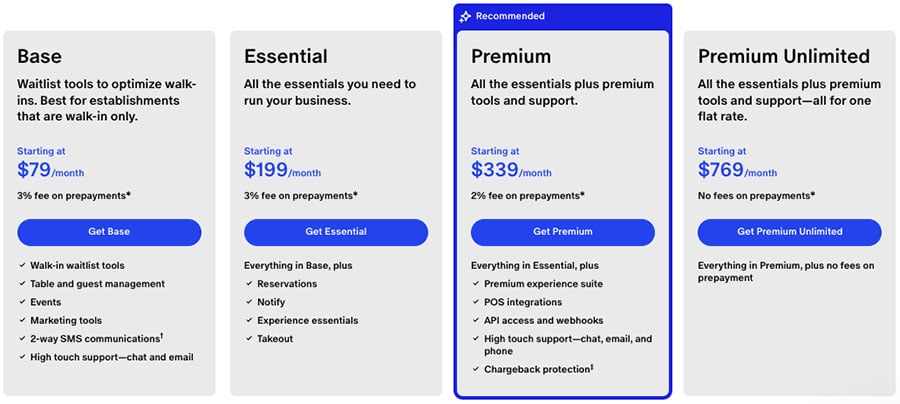
➡️ You can learn more about Tock here.
The sweet spots? The ‘Plus’ and ‘Advanced’ plans
So, after all that, what’s the best Squarespace plan to choose?
Well, when advising clients on what the best Squarespace plan for them is, I always ask them the following question: what’s your site for, content or ecommerce?
Content sites typically include:
- brochure sites
- portfolio
- music websites
- blogs
And an ecommerce site would be:
- an online store or
- a site selling subscriptions.
If creating a good content site is your main aim, my advice would usually be to go for the ‘Core’ plan — the ‘Basic’ plan, with its restrictions on integrations, custom coding and popups, really is suitable for fairly simple projects.
The ‘Core plan’ has the added advantage of facilitating more comprehensive online selling too — meaning that if you do want to dip your toes into e-commerce properly, you are good to go with that on this plan.
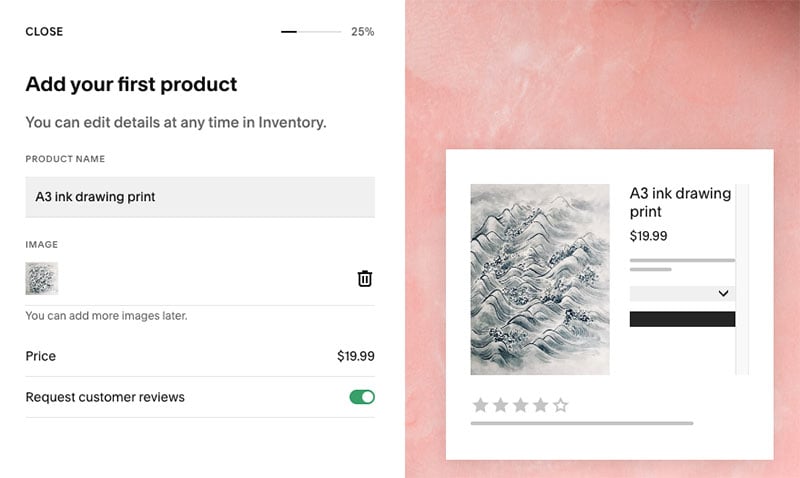
If you want to use Squarespace for ecommerce purposes, then I’d recommend the ‘Plus’ plan, as it gives you access to all the main Squarespace ecommerce features, including its API at a very reasonable price point.
I’d recommend the ‘Advanced’ plan to high volume sellers (as the transaction fees and credit card fees are more competitive) or those working with a lot of video content (storage for which is unlimited on the Advanced plan).
Buying domains from Squarespace
By default, when you create a website with Squarespace, you get a ‘Squarespace domain’ — yoursitename.squarespace.com.
Although technically your site can live happily at this web address, and will function perfectly well there, it’s generally better to use a custom domain name (‘yoursitename.com’). Custom domain names generate more trust in a brand and can perform better in search results too.
If you pay for your Squarespace pricing plan via an annual subscription, you’ll get a free domain name from Squarespace for your first year of service. Alternatively, you can buy a custom domain name from Squarespace (prices range from $12 — $70).
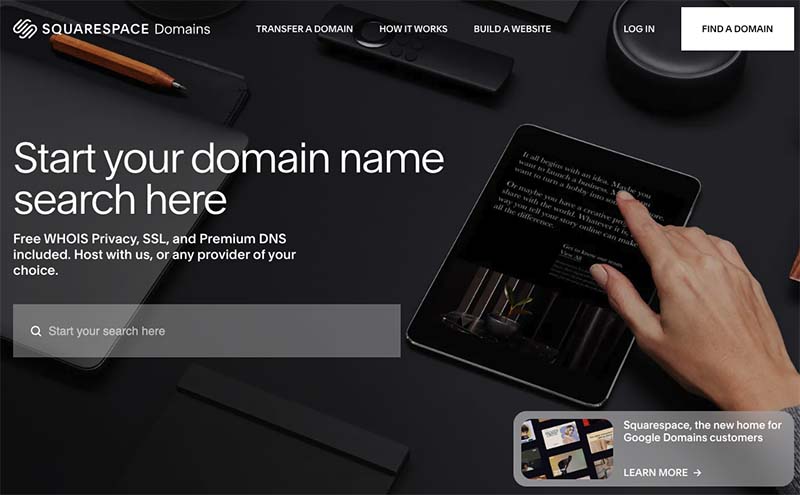
For security reasons however, some people prefer to use a separate domain registrar – it’s generally better practice to keep your domain and your hosting / CMS with different providers (so that if you lose access to one account you don’t lose access to everything).
Free trials and discounts
If you’re interested in using Squarespace, a 14-day trial is available, and the company is currently offering 10% off its plans. This can amount to quite a saving, especially if you opt for one of its ‘commerce’ plans.
This discount is available for a limited time only — to get it,
- Go to the Squarespace website using this link.
- Enter the code STYLEFACTORY10 when purchasing a plan.
Alternatives to Squarespace
No discussion on Squarespace pricing would be complete without a look at some of the other website builders available!
If your plan is to use a ‘hosted’ website builder to create a content-based site (portfolio, brochure site, music site etc.), it’s hard to argue with Squarespace. Its templates are elegant; the platform is feature rich; and it’s really easy to use.
But if you do feel like looking elsewhere, you could consider Wix, Jimdo or WordPress.com (the hosted version of WordPress).
You can learn more in our Wix vs Squarespace and Wix vs Shopify videos below.
If budget is a key concern, you could consider going down an open-source, self-hosted WordPress route — our Squarespace vs WordPress comparison goes through the pros and cons of doing so.
If the main goal of your project is to build an ecommerce site, then Shopify is probably the most obvious alternative.
Whilst Shopify’s template selection isn’t quite as extensive as Squarespace’s, and its non-commerce features (blogging, galleries etc.) are less impressive, it boasts an extremely comprehensive set of online selling tools that eclipse many of Squarespace’s.
In particular, Shopify is great for multilingual selling and selling in multiple currencies (Squarespace currently isn’t a particularly good fit for multilingual selling and doesn’t facilitate selling in multiple currencies at all).
You can try Shopify for free here.
BigCommerce is also a very good option for building an ecommerce site with — for more information about this tool, do take a look at our review of the platform.
Any thoughts on Squarespace pricing? Leave a comment!
Now: over to you. If you’ve got any queries or thoughts on Squarespace pricing, do leave a comment below! We read all questions and will do our best to help.
More Squarespace and ecommerce resources
We blog regularly on web design, and in addition to this Squarespace pricing guide, we have a host of related resources available which you may find useful:
Squarespace pricing FAQ
Can I use Squarespace for free?
There’s no free plan available for Squarespace, but you can avail of a two-week free trial of the platform. This lets you build a site and try out most of Squarespace’s features — however, you won’t be able to take payment or accept donations whilst your account is in trial mode.
What’s the best Squarespace plan?
If you’re building a content site (for example a blog or portfolio), the ‘Core’ plan is the best value because it unlocks all of Squarespace’s content management features and gives you access to full selling features too. For professional ecommerce applications, the ‘Advanced’ plan is really the best one to choose, because it gives you access to the best credit card processing fees, meaning that you can maximize profits on this plan more than the others.
What are the main alternatives to Squarespace?
If you’re hoping to build an ecommerce site, Shopify and BigCommerce are excellent alternatives to Squarespace. For creating content sites you might want to consider Wix or WordPress.
No comments